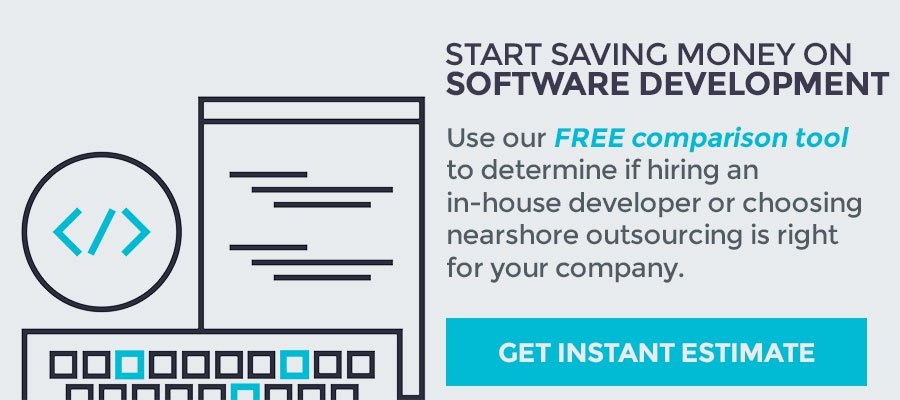

There are multiple advantages to outsourcing your software development projects, primary of which are cost-effectiveness and efficiency. By having an outside team of professional software developers turn your abstract concepts into working programs, you save a good amount of resources (like time, money, and human talent) you would have otherwise spent on finding, hiring, and training your own in-house team.
And even if you already have an existing in-house software development team, you still stand to benefit from outsourcing. For instance, you can choose to outsource software development projects that are well beyond the scope or capabilities of your own developers. Alternatively, you can have your team work alongside the outsourced team to ensure they gain the experience and technical know-how needed for similar future projects without compromising time or program quality.
Of course, as with many things, this is easier said than done.
A common misconception regarding outsourcing is that it’s as easy ordering take-out. Simply find the right company, place your order, wait ten to fifteen business days (or more) for final output, and bing!—fully-developed, fully-functional software.
As far as overviews go, it’s a pretty apt summary. However, the reality is that the process—especially for first-timers—is rarely so neat. Even as the client company, you’re expected to put forth a certain amount of effort to the project to ensure success.
Prepare a Design Document
Most of the time, a lot business owners and account manager will meet up with the outsourced development team to discuss what kind of software they want. They rely on the notes the team takes and the expertise of each team member to fulfill their vision for the software. There’s nothing wrong per se with this method, but it’s rather inefficient and—more often than not—problematic.
Developing software without a plan or blueprint to follow is a nightmare. It’s like trying to shoot a video without a script—it’s feasible, but it’s simply not practical. Building a program without a solid outline can cause twice as many problems to arise, twice as many errors to occur, and twice as many complications in the code. And because of all those speedbumps, development could take twice or even thrice the amount of time to finish.
When outsourcing software development projects to a third-party company, transparency is of the utmost importance.
Hence, the necessity of a design document.
This blueprint can mitigate potential misunderstandings and minimize overall risk during the actual development. It clearly outlines your concept to better aid the executions. Details, specifications, uncertain areas, non-negotiable factors, optional additions—everything listed on the design document should serve to help the developers understand what is being asked of them without needing to call the author for clarification during every stage of the build process.
Have Milestones
 Milestones serve as a key feature that you and your outsourced team can use to measure the progress—and success—of your software development projects. Realistically speaking, any development project can be distilled into smaller, manageable tasks that can either be delegated to different groups or managed as separate small-scale projects. Either option ensures that everyone’s time and expertise is used optimally.
Milestones serve as a key feature that you and your outsourced team can use to measure the progress—and success—of your software development projects. Realistically speaking, any development project can be distilled into smaller, manageable tasks that can either be delegated to different groups or managed as separate small-scale projects. Either option ensures that everyone’s time and expertise is used optimally.
Setting milestones further provides structure to the overall software development process. Think of them as landmarks or trail markers along a journey. They give everyone involved—from the client company to the point person between parties—a concise picture of where the software is and how much further it has to go.
As the client, having milestones agreed upon by both teams also gives you an easier, much more manageable way of tracking the company’s work and progress.
Practicality aside, milestones can also serve to boost team morale. Having a goal to work towards and systematically meeting it every few days can keep the developers enthusiastic and engaged, as opposed to working on one project for three whole months without any sense of accomplishment or chance to reset until the entire ordeal is finished.
The latter scenario can be draining and frustrating for the people involved, which—in turn—could negatively affect the development process.
Related Content: Avoid These 4 Mistakes when Outsourcing Your Software Development
“This is What I Think I Want”
As the point person or manager of the whole process, you need to take the time to sit down with your team and really hash out what you want your software to do. As mentioned earlier, preparing a design document, schematic, or blueprint of your desired software is one of the best things you can do to ensure successful outsourced development.
However, keep in mind that your chosen software development company may be more knowledgeable regarding the capabilities and limitations of current technologies, techniques, and trends. Ergo, what you want and what can actually be achieved might not match up perfectly, point for point.
Steve Mezak, founder and CEO of Accelerance, Inc.—a leader in global software development outsourcing—reiterates the crucial difference between “this is exactly what I want,” and “this is what I think I want.” He points out that even if you’re the business owner, what you want isn’t always what you need in terms of software programming and service.
By telling your development partner, “This is what I think I need,” the outsourced team can approach your software development projects with less restriction and more creativity. This could potentially result in fresh ideas and solutions for your software.
The last thing you want to do is hamper the developers and prevent them from fully utilizing their considerable experience (and expertise) to give you the best possible program that perfectly suits your milestones, stipulations, and current situation.
Once you receive the completed software, it also pays to test the software several times before declaring the contract complete. Run it through different simulated scenarios—especially ones tailored specifically for your intended audience— so that you have a pretty good idea of how it will perform for different users with different needs. You should also have a set of metrics to measure its performance against and a framework to make sure everything’s running within parameters.
Outsourcing software development projects can be an efficient way to meet business growth and marketing objectives— provided it’s done right. As we mentioned earlier, it can be tricky navigating through the process for the first time. However, just find solace in the fact that everything can be solved if both parties make an effort to communicate clearly and efficiently with each other.



